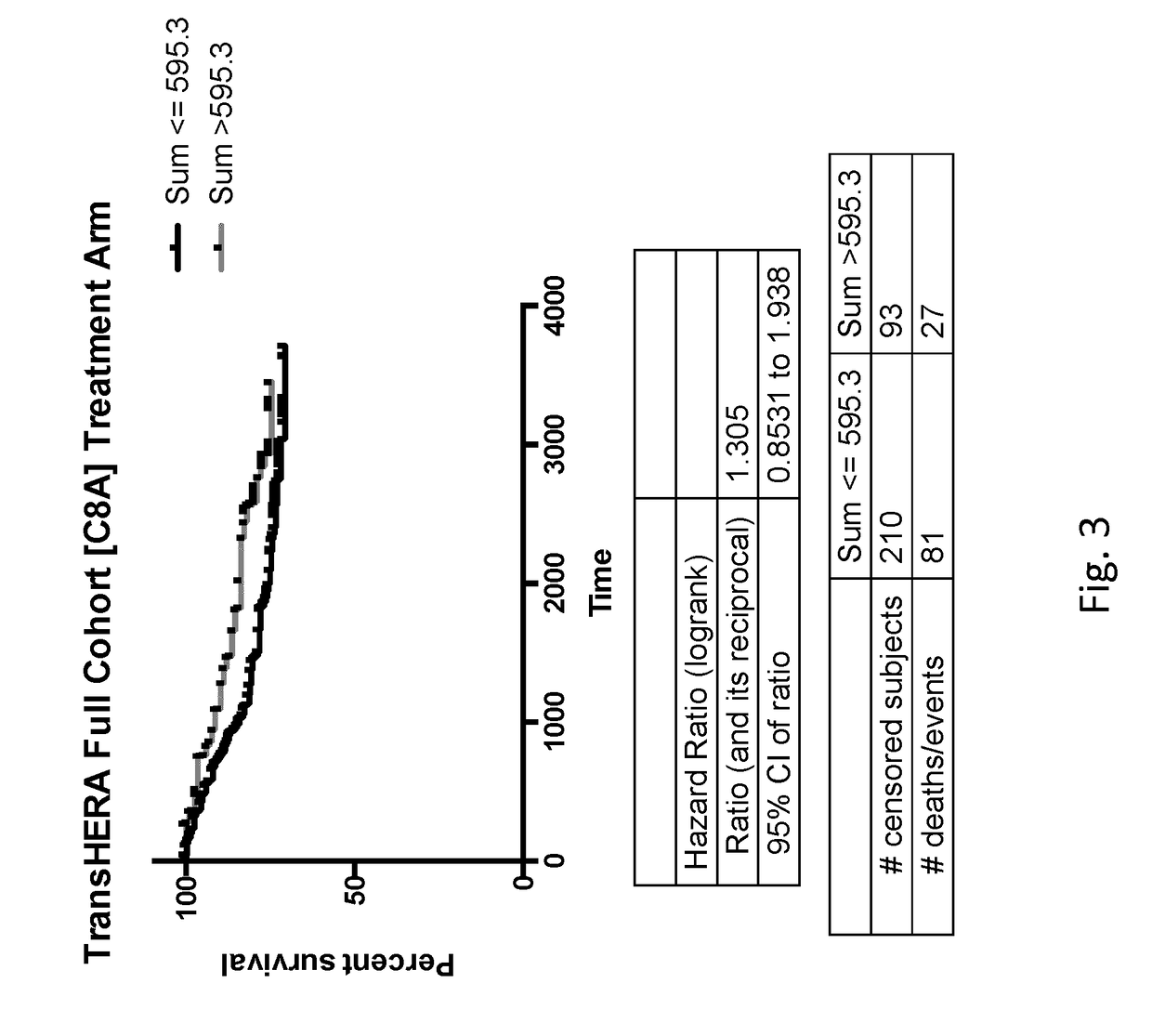Predictive biomarker(s) of treatment with erb antibodies
a biomarker and antibody technology, applied in the field of breast cancer outcome prediction, can solve the problems of difficult to obtain fresh tissue samples from patients for analysis, no biomarker has all the requisite characteristics to provide enough specificity or sensitivity,
- Summary
- Abstract
- Description
- Claims
- Application Information
AI Technical Summary
Benefits of technology
Problems solved by technology
Method used
Image
Examples
example 1
Optimization of Gene Signatures
[0207]To determine biologically relevant optimal gene signatures, the inventors have selected for gene signatures that share a common known feature or attribute such as sharing a common DNA promoter motif indicating a shared transcription factor responsible for differential expression of the gene signature.
[0208][FRMPD2, PTGS1, OR52W1, MIR631, DSG3] shown in (FIG. 23) ranked #1 as a predictive gene signatures (HR=0.159 95% CI=0.04-0.16) for the sum of the mRNA expression resulting in a high expression group as compared to the cohort mean benefiting from treatment with trastuzumab, a significant improvement over the [C8A] gene signature with a HR=0.246
[0209]Promoter analysis of [FRMPD2, PTGS1, OR52S1, DSG3] shown in (FIG. 24) indicates a shared promoter family V$CDXF with a p-value of 9.3E-4. In total, 4 of the 5 genes in the gene signature share a common promoter element. MIR631 is not included in the promoter analysis as it is a miRNA and is not annot...
PUM
| Property | Measurement | Unit |
|---|---|---|
| Northern blot analysis | aaaaa | aaaaa |
| nucleic acid | aaaaa | aaaaa |
| resistance | aaaaa | aaaaa |
Abstract
Description
Claims
Application Information
 Login to View More
Login to View More - R&D
- Intellectual Property
- Life Sciences
- Materials
- Tech Scout
- Unparalleled Data Quality
- Higher Quality Content
- 60% Fewer Hallucinations
Browse by: Latest US Patents, China's latest patents, Technical Efficacy Thesaurus, Application Domain, Technology Topic, Popular Technical Reports.
© 2025 PatSnap. All rights reserved.Legal|Privacy policy|Modern Slavery Act Transparency Statement|Sitemap|About US| Contact US: help@patsnap.com



